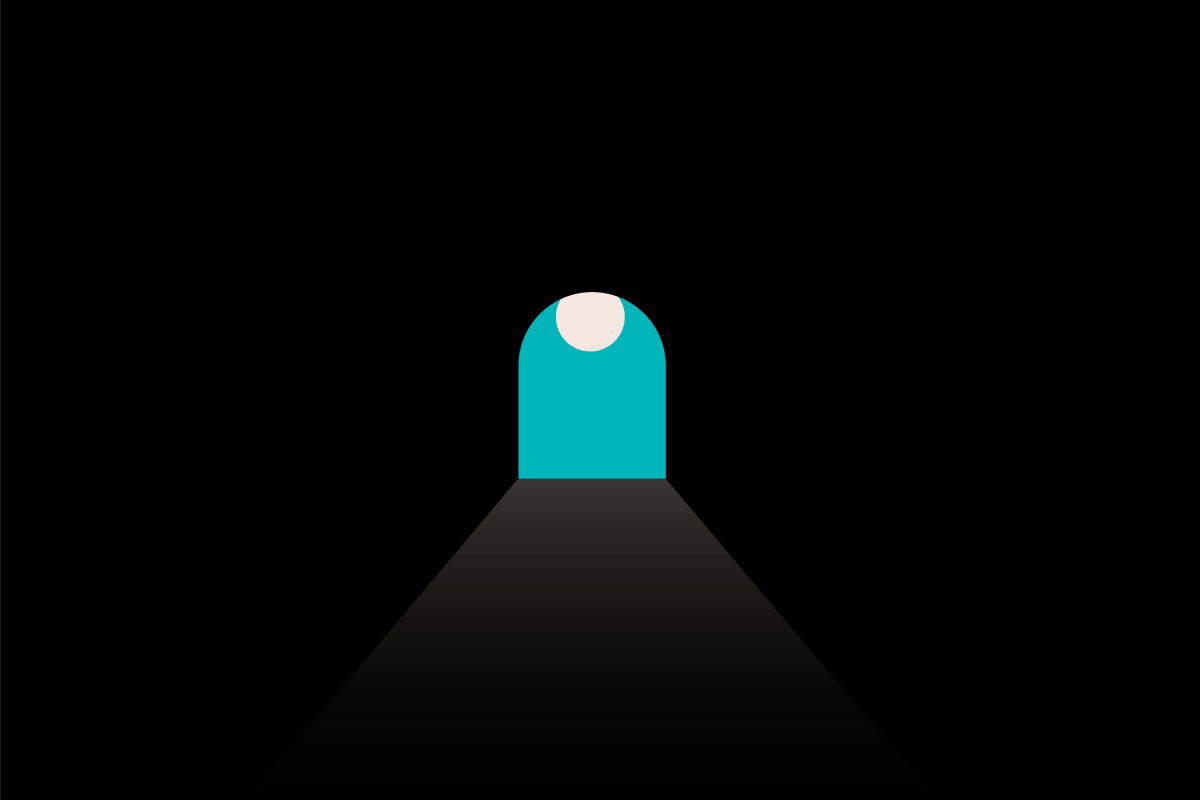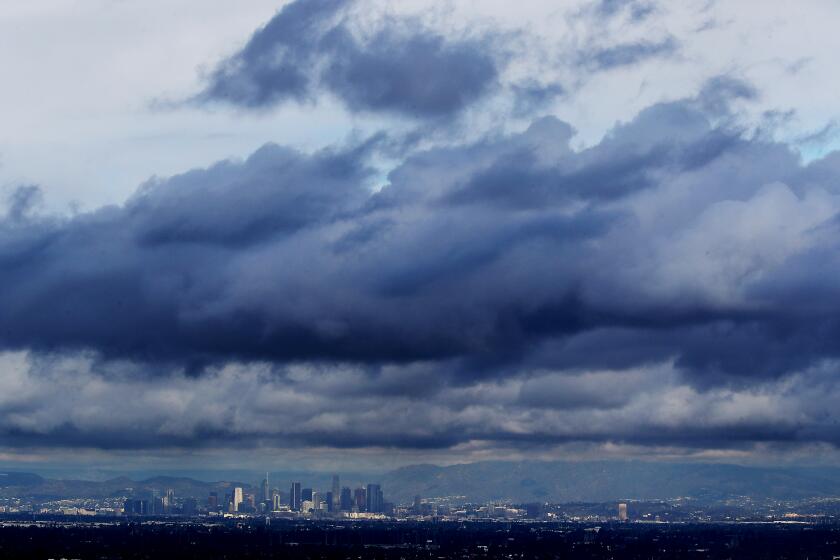When the world feels like it’s caving in, can hope for the future dig us out?

- Share via
Millions of people across the U.S. today are casting their ballots in the midterm election. Driving this act, for many of us, is hope — however faint. Hope that our candidates of choice will be elected to office, listen to us, and act in our best interest. Hope that our country and communities will see progress, however we conceive of it.
Of course, we have all been disappointed by our elected representatives many times over. Acquisition and maintenance of power often supersede the needs and desires of constituents. Yet many of us still have hope that our votes matter.
Get Group Therapy
Life is stressful. Our weekly mental wellness newsletter can help.
You may occasionally receive promotional content from the Los Angeles Times.
This week, we answer a reader question that speaks to the challenging times we live in and the desire — the hope — that things can get better: When the world feels like it’s caving in, can hope and optimism for a better future dig us out?
Some of you will feel excited about this week’s topic. Others will have the urge to roll their eyes, anticipating some form of toxic positivity. Notice that feeling and stay with me. I’m not a blindly optimistic person, and also, that’s not what hope is.
I interviewed two incredible scholars of hope: American writer, historian and activist Rebecca Solnit, and Mariame Kaba, an educator, organizer and author who founded Project NIA, which works to end youth incarceration. I left my conversations with them feeling energized and, yes, more hopeful. I hope you will, too.
What is hope?
You might be wondering what hope has to do with mental health, the topic of this newsletter. Much academic ink has been spilled about hope, and for good reason. According to research, depression and difficult life events are less intense for those who are more hopeful. Researchers have also found that having hope is a protective factor against suicide and can play a role in healing specific conditions, including anxiety- and trauma-related disorders. Hope is our will to keep going in the face of adversity.
For Kaba, hope is a discipline — a phrase she’s become well known for in activist communities.
“Hope is embedded in the daily actions that you can take to make a difference in your life and other people’s lives,” she told me. It isn’t an emotion, she said. And it’s certainly not optimism.
A lot of people think that being hopeful is some sort of trap, Solnit said, because they confuse it with optimism (everything will be fine), which is the flip side of pessimism (everything will not be fine).
“Both the optimist and pessimist feel confident they know what’s going to happen, and therefore they don’t have to, or can’t, do anything,” she went on. Hope, for her, is a sense of possibility because the future is uncertain, not in spite of it.
As I sat with these framings of hope, I thought about Austrian psychiatrist Viktor Frankl and his seminal work, “Man’s Search for Meaning.” Frankl, a Holocaust survivor, detailed the horrors of Auschwitz and the life-or-death choice to hold on to hope. Those who lost hope, he said, developed a fatalism that inevitably ended in death. They experienced an “existential vacuum” — his term for a complete loss of meaning and hope, a sense that nothing mattered any longer. But his philosophy was not about pretending that problems did not exist. The hope that kept Frankl alive in Auschwitz endured amid the harshest of realities.
“Relatives of mine died in the Holocaust, and I think of the people who found meaningful things to do even in Auschwitz, in Treblinka,” Solnit said. “The day before Auschwitz was liberated seemed like every other day. Last among the people who knew what would happen were the prisoners.”
In her own work, Solnit teases out hope from the historical record, particularly in how hope has fueled grassroots activism that has shaped society in indirect and unpredictable ways.
“We are constantly encouraged to be despondent in this culture, to believe that power comes from above and that ordinary people don’t have it,” Solnit said. “If you aren’t a student of history, you might think the world doesn’t change very much. You might get the history of a great man or a terrible man running everything, and not the history of the civil rights movement, the gay rights movement, the farmworkers movement, how enormous parts of the world we live in were made by ordinary people building campaigns, often outside of legislative politics.”
The right for queer people to marry, for example, wasn’t just handed down from the Supreme Court out of nowhere. The justices in 2015 ratified what came to be thought of, by the majority of Americans, as reasonable and fair after countless queer people risked their safety by sharing their authentic selves with friends, co-workers, neighbors and families.
But that progress took many years and perseverance, fed by the hope that raising your voice — which in the moment can feel like screaming into a void, or at a brick wall — might push the needle one day. Results, if they come, take time and are often circuitous.
Solnit points to Occupy Wall Street, the protest movement against economic inequality and the influence of money in politics that began in New York City in 2011. Occupy was broadly characterized by the media as a failure. Yet Solnit (and many others) argue that born from the movement were police accountability campaigns that lasted for years afterward, the rise of the national conversation around the ethics of the financial system championed by presidential candidates and Sens. Bernie Sanders and Elizabeth Warren, and the California Homeowner Bill of Rights, a set of laws that provide protections to homeowners who are facing foreclosure. And the fight for student debt forgiveness started a decade ago, at Occupy Wall Street. Now the Biden administration is set to cancel some or all of 45 million Americans’ outstanding student loans.
“You have to be able to see something more complex and less direct than ‘They did this on Tuesday, and got their results on Wednesday,’’’ Solnit said.
‘Hope is a discipline’
Hope is threaded throughout Kaba’s work as a prison abolitionist. She’s led collective organizing efforts that have freed from prison people who were told they would die behind bars. She holds on to the belief, the hope, that people are essentially good and that if we have the resources to thrive — not just survive — we will be better to one another.
“To keep going in this work, I have to believe in a world where other people also care deeply about justice, and freedom, and liberation, and coming together in a way that we can create a society in which we want to live,” she said. “It eschews a sense of cynicism and helplessness.”
In the absence of hope comes despair and complacency. This is a common response, for example, to the climate crisis; Solnit notes that many people who are new to the climate movement see the devastation of our natural world as inevitable. But deeply knowledgeable scientists and organizers know that positive environmental changes are already happening, and need to be accelerated and scaled up. They certainly have fear and anxiety, she said, but they aren’t hopeless.
Which loops us back to Kaba’s concept of hope as a discipline. We don’t know what tomorrow will bring or whether the seeds we sow — of kindness, of awareness — will bear fruit in our lifetimes, or ever. But we do it anyway. That’s hope in action.
“You never know what will happen,” Kaba told me. “Let go of your deep desire to want to control that. Focus on your next right step, and the one after that.” Leaning into uncertainty leads to experimentation and innovation, the catalysts of change.
Before I wrap up this newsletter, I’d like to directly address our reader’s question: Can hope dig us out when the world feels like it’s caving in?
“I’ve felt that way plenty of times,” Solnit said. “It can feel like you’re surrounded by walls, but keep looking, because there might be a door or window, or a sledgehammer. Can we scale these walls, can we take them down? Can we form a coalition that can build the ladder we need? What powers still remain to me? Who are my allies?”
For me, writing this piece has reinforced the fact that there’s no way of knowing whether hope will save us. But the practice of hope tells us it’s better to try than to not.
Until next week,
Laura
If what you learned today from these experts spoke to you or you’d like to tell us about your own experiences, please email us and let us know if it is OK to share your thoughts with the larger Group Therapy community. The email [email protected] gets right to our team. As always, find us on Instagram at @latimesforyourmind, where we’ll continue this conversation.
See previous editions here. To view this newsletter in your browser, click here.
Enjoying this newsletter? Consider subscribing to the Los Angeles Times
Your support helps us deliver the news that matters most. Become a subscriber.
More perspectives on today’s topic & other resources
Rebecca Solnit on why climate despair is a luxury: “Those facing flood and fire can’t afford to lose hope. Neither should we.”
In this interview with the Intercept, Mariame Kaba speaks about the role hope plays in building a long-term abolitionist movement.
The difference between hope and optimism, according to social scientist Arthur C. Brooks: “Hope is more than a ‘nice to have’ for well-being; lacking it is disastrous.”
Other interesting stuff
The Times and Bob Baker Marionette Theater have partnered to create a mental health puppet show for kids, as well as an accompanying guide for parents. The first season tackles topics like social anxiety, homelessness, fears, and grief. Watch it here.
10 ways to get mental health support during a therapist shortage, according to 300 experts across the U.S. who gave advice on how to get an appointment and what people can do in the meantime to help themselves.
Teens have been turning to TikTok in search of a mental health diagnosis. While social media can help young people feel less alone, using it to evaluate symptoms has many downsides.
The psychedelic chemical in “magic mushrooms” may ease depression in some hard-to-treat cases, a preliminary study found. It’s the most rigorous study to date evaluating psilocybin for treating depression.
Group Therapy is for informational purposes only and is not a substitute for professional mental health advice, diagnosis or treatment. We encourage you to seek the advice of a mental health professional or other qualified health provider with any questions or concerns you may have about your mental health.
Get Group Therapy
Life is stressful. Our weekly mental wellness newsletter can help.
You may occasionally receive promotional content from the Los Angeles Times.




